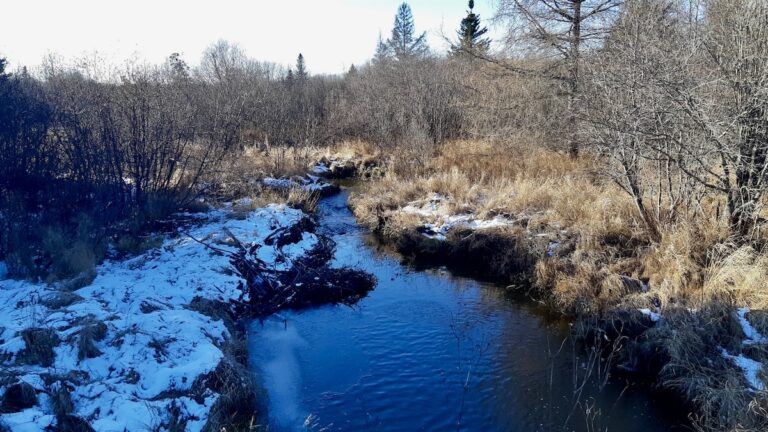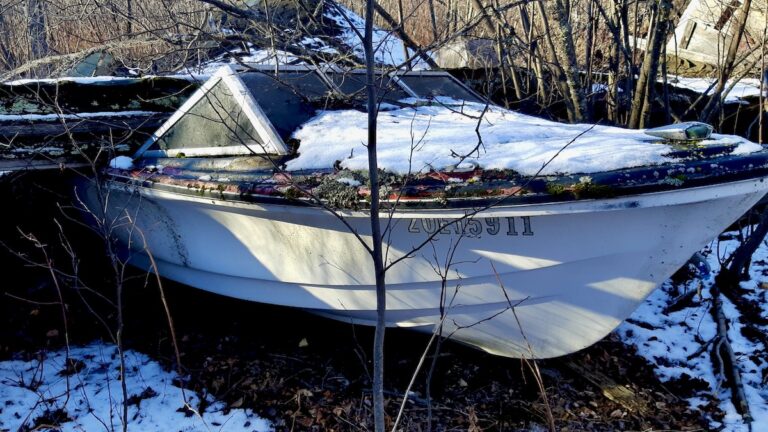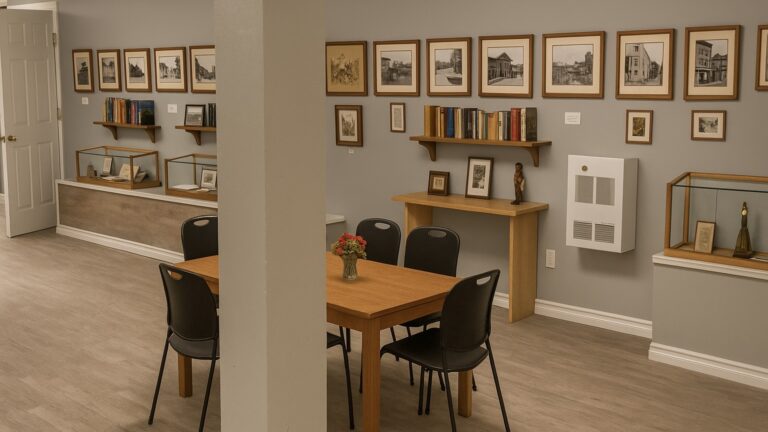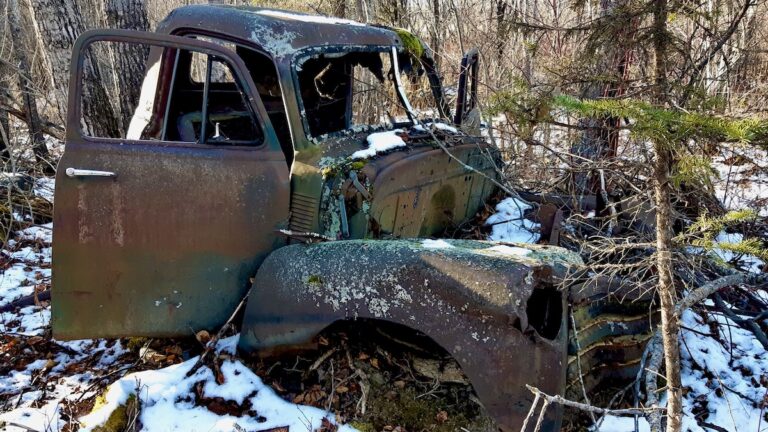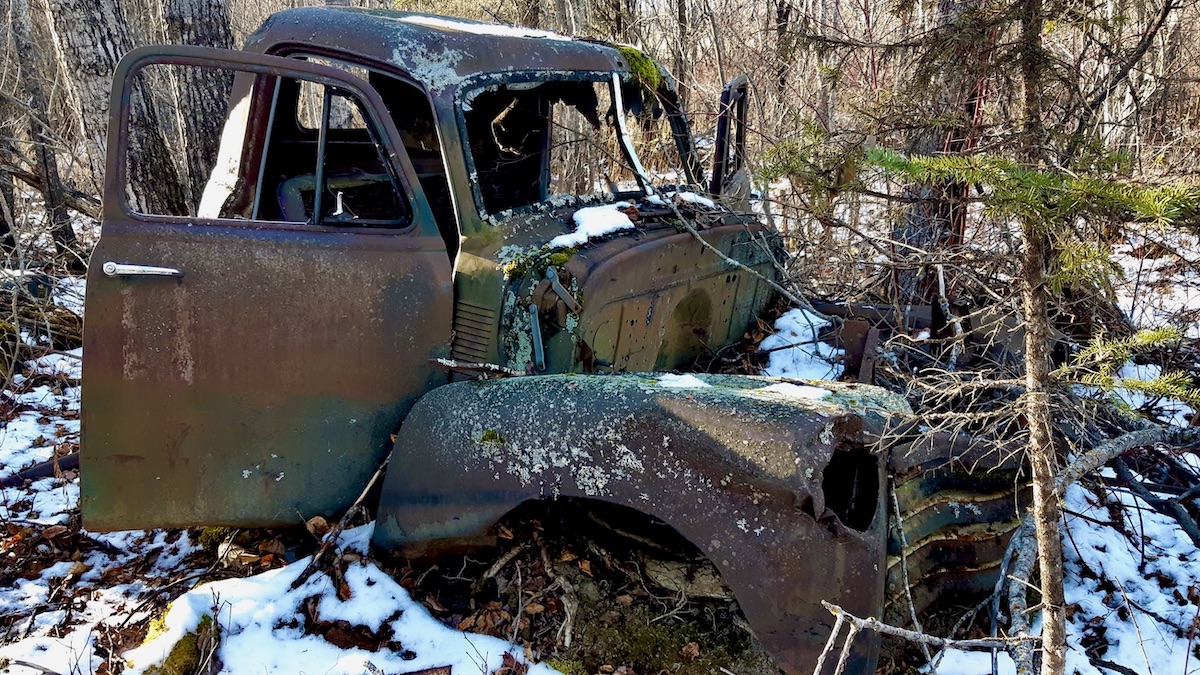
An old, rusted truck rests deep in the woods of Borups Corners as the forest grows through its frame. Time, weather, and young trees have turned it into part of the landscape it once traveled.
An abandoned truck in Northwestern Ontario slowly returns to the land that once carried it.
The old truck sits half-sunk into the forest floor, its metal body softened by rust, moss, and years of northern weather. The windshield is long gone, the cab open to drifting snow and wandering light, as if the forest itself has been paging through the empty interior for decades. Branches press through the gaps in the frame, and the remaining paint—once proud and bright—has faded into a muted palette of greens and browns, blending the machine into the quiet patience of the woods.
There is a kind of reverence in how the land reclaims what’s left behind. Snow settles gently into the curve of the fender; lichens trace delicate maps across the hood; young trees weave themselves through what were once gears and steel. The truck is no longer a vehicle but a story—one told slowly, in rust and bark and stillness—about all the things that linger long after their journeys end.
Possible Identification:
While the truck is heavily deteriorated, the rounded cab shape, door design, and fender style resemble mid-1940s to early-1950s North American trucks. It most closely resembles a late-1940s Chevrolet or GMC pickup, based on the cab curve, vent placement, and the shape of the door and hood, though the level of decay makes precise identification difficult.

